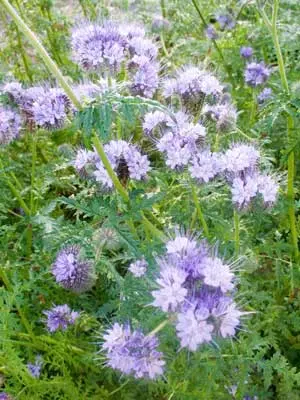Phacelia seeds: growing
Phacelia is a versatile plant; it is grown as a green manure to fertilize the soil, as a honey plant to attract pollinating insects, and also for ornamental purposes. Phacelia seeds have high germination and resistance to adverse weather conditions.
Insects are very fond of phacelia for its high honey content. It can produce from 250 kg to 1 ton of honey from 1 hectare of land. Nectar has many beneficial properties and high nutritional value.
Phacelia seeds are highly resistant to adverse weather conditions
The resulting honey has a light green hue, has a delicate taste and aroma. Has a pasty consistency. In terms of its value, it surpasses linden and buckwheat.
Bees can be found above the plant even after sunset, but the peak of insect activity occurs during the day, from 13:00 to 15:00.
The melliferousness of a plant depends on the quality of the soil, the more fertile it is, the more you can collect from flowers
In addition, the flower can be used to attract pollinators to other plants. So, phacelia can be planted near fruit and berry bushes and trees, in areas with clover, alfalfa.
Growing a melliferous phacelia
The plant is absolutely unpretentious, it grows in cold weather, in the absence of watering, on any soil and even on wastelands. But the number of buds and their honey content will depend on the place of planting.
You can sow seeds at any time from early spring to late autumn. One has only to take into account that the number of seeds when planting before winter needs to be increased, since some of them may die.
Phacelia planted before winter quickly emerges in early spring, blooms 2 weeks earlier than spring plantings, providing quick honey collection.
To ensure flowering and honey production throughout the summer period until late autumn, it is recommended to plant seeds in 4 approaches. You should start with a podzimny planting, then in early spring. The next 2 plantings are carried out every 2 weeks.
Plant seeds do not need additional preparation before sowing. If desired, they can be mixed with sand for a more even distribution. It is not necessary to deepen the seeds, it is enough to dig them in with earth by no more than 2-3 cm.
The honey plant will be a real find for both beekeepers and summer residents. It does not require much effort during planting and care, is a source of valuable nectar and can serve as a bait for pollination of dacha fruit and berry crops. In addition, it can be used as livestock feed and effective soil fertilization.










